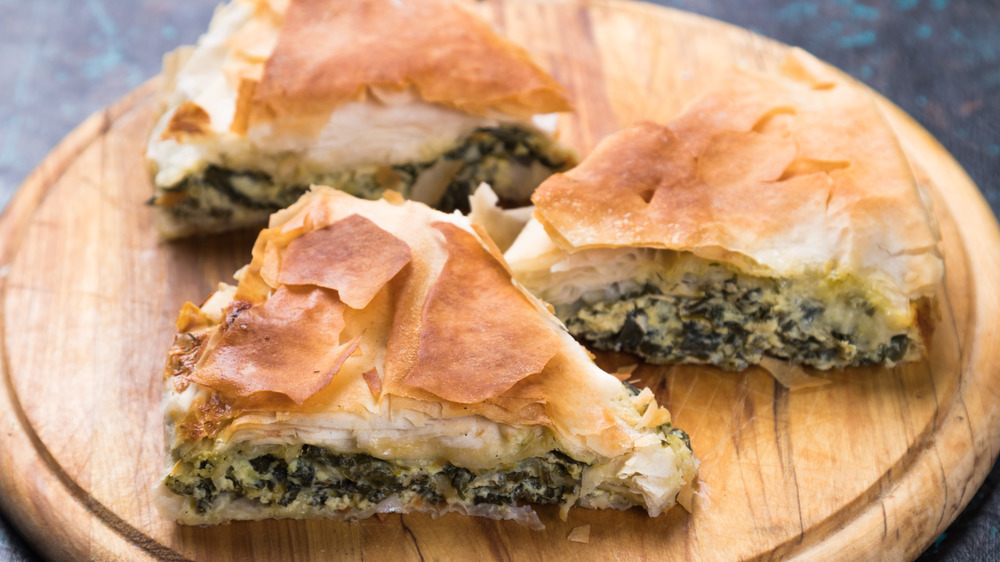The Real Difference Between Puff Pastry And Phyllo Dough
Pastry lovers everywhere know that the secret is in the dough. While sweet and savory fillings can be applied to almost any bread base, the difference between a crispy waffle wafer, a crunchy pie crust, a flaky baklava layer, and a puffy croissant are true game changers. So, how do you pick the correct dough, and what is the difference between dough types? We'll cover two of the most indulgent types of dough here — phyllo and puff pastry.
Both doughs are highly layered, yielding a lightweight result that can be either a sweet or savory creation — the dough itself is a more neutral flavor (via Martha Stewart). While puff pastry is French, phyllo dough has roots in the Middle East and the Balkans and is common in Greek cooking. Puff pastry will resemble thicker layers, often hand rolled as butter is folded into the dough on repeat. Phyllo is more like layers of edible tissue paper. In phyllo, there's no butter built into the process, but many choose to brush on a light butter or oil between layers.
Flaky phyllo vs. puff pastry
Where phyllo tends to be crispy and flaky, puff pastry is all about the curves. Think about a croissant or even beef Wellington, this is puff pastry that is buttery and molds around items. Baklava or spanakopita are examples of phyllo dough, featuring lighter layers and less rise as you cut through the crispy dough. Because of the different textural features, the two doughs cannot necessarily be used interchangeably (via Taste of Home). It would be kind of strange to have a flaky Wellington or a soft and puffy baklava after all.
But if you're in a pinch, there's some crossover that can still happen between these two items. One home cook reports a successful switch-out, "We always use filo dough for our brie wheel! They are totally different products but once you have cooked with each, you will be able to imagine their uses and different effects. Think of the difference between a salmon en croute with puff pastry vs. one wrapped in puff pastry."
What we know for sure — both doughs sound delicious.

